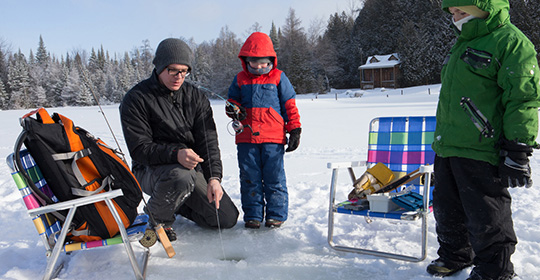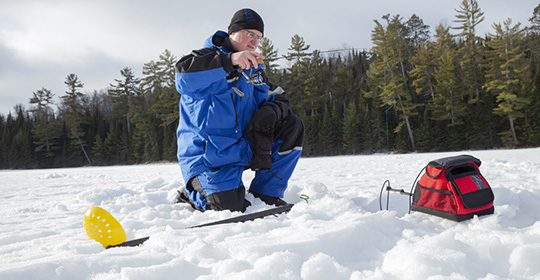12 Tips On Ice Fishing For Beginners
By Ken Schultz
Dec 20, 2023
Here are the basic matters to know about ice fishing for beginners, with primary emphasis on safety, equipment, and lure components
Thousands of people enjoy ice fishing every year for the experience, the fish-catching, and the camaraderie. Like most efforts, this activity requires preparation and knowledge. Here are twelve ice fishing for beginners tips that will help you be safe and successful.
1. Always make sure that the ice is thick enough to support your weight. The first tenet of ice fishing basics is that you need at least 4 inches of ice to safely support the weight of one person; 5 to 7 inches for a group; 6-7 inches for a snowmobile or atv; 8 inches for a vehicle weighing 3,500 pounds; and 12 inches for a vehicle weighing 8,000 pounds. Minnesota’s DNR has a good guide for how to check ice thickness.
2. The second tenet is to have some type of safety equipment in case you fall in. This includes a pair of ice picks on a lanyard around your neck, a PFD, a throw rope, and a whistle. Another necessity is ice cleats worn over boot soles to improve traction.
3. And the third is essential for comfort and health: dress warmly to avoid hypothermia and frostbite. There are excellent clothing and footwear options available. Wear thermal underwear, dress in layers, have wind- and weatherproof outerwear, and wear warm boots, gloves, and headwear. Hand and toe warmers are also good.
.jpg)
4. Where you fish on a waterbody matters and varies with species pursued. Most ice fishing occurs in water less than 20 feet deep, but the more you know about the place you’re fishing, the better you can determine where to start.
5. As a beginner, you may want to use a spud (ice chisel) to make a hole in the ice, especially if it’s not thick. But a manual auger is better, and a power auger means you’re serious and want mobility.
6. Cut holes strategically over different bottom depths. Note that the farther apart they are, the more time it may take to get to one when there’s some action.
7. It helps to know the depth where you’re fishing. You can drop a measured and weighted line down to figure this out, or use portable sonar (which will also help locate fish).
8. Always be vigilant when using a tip-up. This is Ice Fishing 101. When a tip-up flag is triggered, indicating a strike, rush as safely as possible to the hole, remove the tip-up, grab the line, and give it a hard snap if you feel a fish at the end.
9. Small live minnows are an especially popular tip-up bait, but worms are also used. Check the bait at least every half hour, and skim ice out of the hole while you’re at it.
.jpg)
10. Keep your bait fresh.This is a most important tip about ice fishing for beginners. A lively minnow outfishes a sluggish one.
11. Small jigging spoons and small grub jigs are favored for use with a jigging rod and are particularly good at catching yellow perch, walleye, and sunfish. Generally fish them near the bottom, keeping your line taut (the better to feel a strike), and employ a slow jigging action.
12. Talk to others. Ice anglers are a friendly bunch as long as you don’t encroach on their space, and usually willing to share information. So learn from them.









